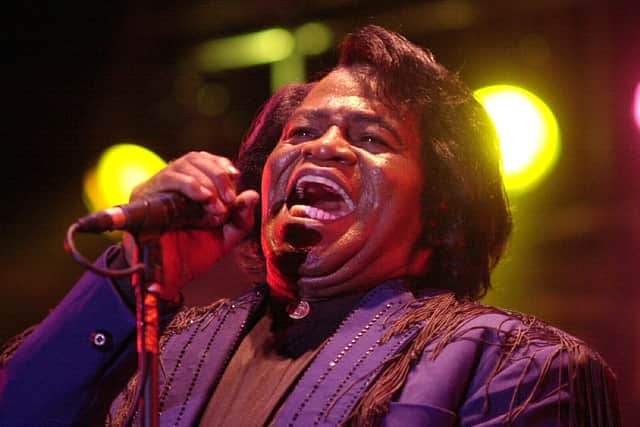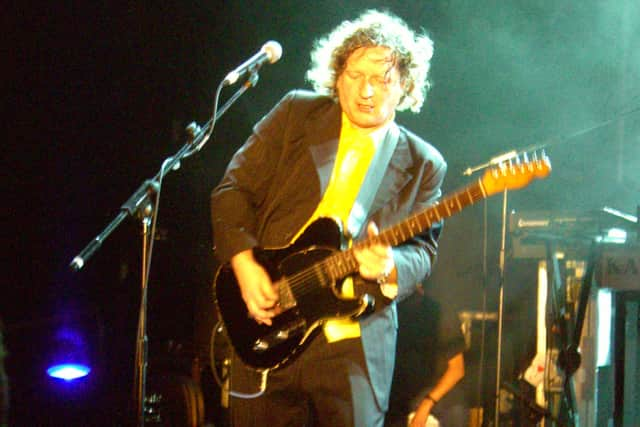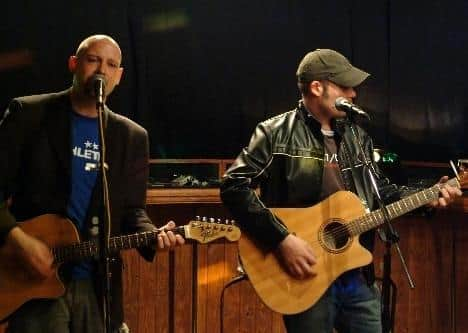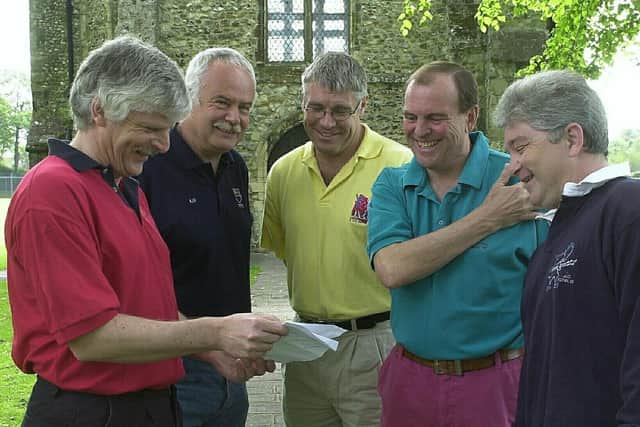Chichester Real Ale and Jazz Festival: Happy memories of RAJF, from James Brown to hard-to-find ales
and live on Freeview channel 276
This year would have been its 40th anniversary but it is also sadly the 10th anniversary of the final night of the festival.
Chris Wood who was chairman for the first eight years and then vice-president, said: “The first week of July is an occasion for memories of the late lamented Chichester Real Ale and Jazz Festival, for 2021 is the 40th anniversary of the first-ever night and the 10th anniversary of the final night of the event.
Advertisement
Hide AdAdvertisement
Hide Ad“I recently prepared a document for the West Sussex Record Office, which now holds an archive of the event, and this will trigger many a happy memories for readers.”


The name of the festival was eventually shortened to RAJF and it took place in Priory Park for 31 consecutive years, from 1981 to 2011, planned, managed and staffed by members of Chichester Priory Park Cricket & Hockey Club.
Chris said: “Its main purpose was to raise funds for the development of sports facilities in Chichester but it developed a life of its own as a popular part of the social scene during the annual Chichester Festivities in July each year.
“In early 1981, the director of Chichester Festivities had in mind to create a fringe event in the form of a beer and jazz festival. Six members of the hockey club agreed to form a committee and ran a successful event in a modest marquee in Priory Park over two nights.”
Advertisement
Hide AdAdvertisement
Hide AdThe first year, when the ticket price was £2.50 and beer was 60p a pint, around 600 people attended.


Over the next 25 years, the event became very popular, growing and growing, to three nights in the second year, then four nights and finally with a fifth session added on Saturday afternoons.
Chris said: “We went from a single marquee to multiple marquees, to a circus big top tent, to large metal-framed tents such as those seen at the Chelsea Flower Show or the Ryder Cup, with a dance floor in front of the stage.
“We went from a few hundred attendees a night to a peak of over 2,500, some enthusiasts even coming from abroad.
Advertisement
Hide AdAdvertisement
Hide Ad“From a modest financial start, we went to annual turnovers in the range of £250,000 to £300,000, and annual profits sometimes exceeding £30,000.”


The turning point came with the financial crisis of 2008. Reduced public spending power led to falling attendances, while competition from other festivals and the increasing costs of regulation also contributed to a rapid decline in turnover and profitability.
Chris pointed out: “The festivals in 2010 and 2011 made significant losses and the organisers decided not to hold a festival in 2012. After a further couple of years, it was decided to wind up the organisation and distribute the remaining assets between the cricket and hockey clubs.
“In all its 31 years of existence, RAJF provided 120 evenings of music and beer in a convivial atmosphere in Priory Park.”
Advertisement
Hide AdAdvertisement
Hide AdIn the early years, the music was almost exclusively jazz, most of it of the traditional variety. Towards the end of the 1980s, more blues and swing music were introduced.


In the 1990s there was a move towards more popular forms of music and the inclusion of tribute bands, and then some original ‘big names’.
Chris said: “An undoubted highlight was the sensational appearance in 2000 of James Brown and in subsequent years other big name bands such Status Quo, Blondie, Boney M and 10cc. The very last session on July 9, 2011, featured the Royal Philharmonic Concert Orchestra, fittingly as it turned out, in a Last Night of the Proms concert.”
For many years, the real ales were curated by Roger Jackson, a well-known pub landlord locally, and special trips were made to breweries in various parts of the country to collect hard-to-find ales that would satisfy the most demanding CAMRA real ale zealot.
Advertisement
Hide AdAdvertisement
Hide AdIn the early years, hockey club members made hundreds of filled rolls in the Priory Park pavilion and offered them for sale along with pub snacks. It soon became clear hot food was needed, so club members with catering experience established Bertie’s Brasserie, offering mainly barbecued food.
Chris said: “As the event expanded, food provision proved too demanding and the organisers sold pitches to external caterers.
“One of the defining characteristics of RAJF was that it provided trestle tables covering about half of the main tent for customers to eat at. Many customers brought their own food and it became the habit for customers with their own picnics to queue up to two hours before doors opened to secure prime position at a trestle table.”
A small proportion of the net proceeds each year was donated to local charities but the major part was allocated for capital projects to develop sports facilities, with more than £250,000 invested over the years.
Advertisement
Hide AdAdvertisement
Hide AdThe festival funded a major part of the first artificial grass hockey pitch in Chichester, at the High Schools in Kingsham Road, as well as making large contributions towards the sports hall at Bishop Luffa School and the artificial grass sports pitch at Chichester College.
The festival would never have succeeded without the hours of time freely given by local volunteers. Each night, the volunteers were organised into three teams, which were rotated in the course of the evening to serve drinks, clear up glasses and man the gate.